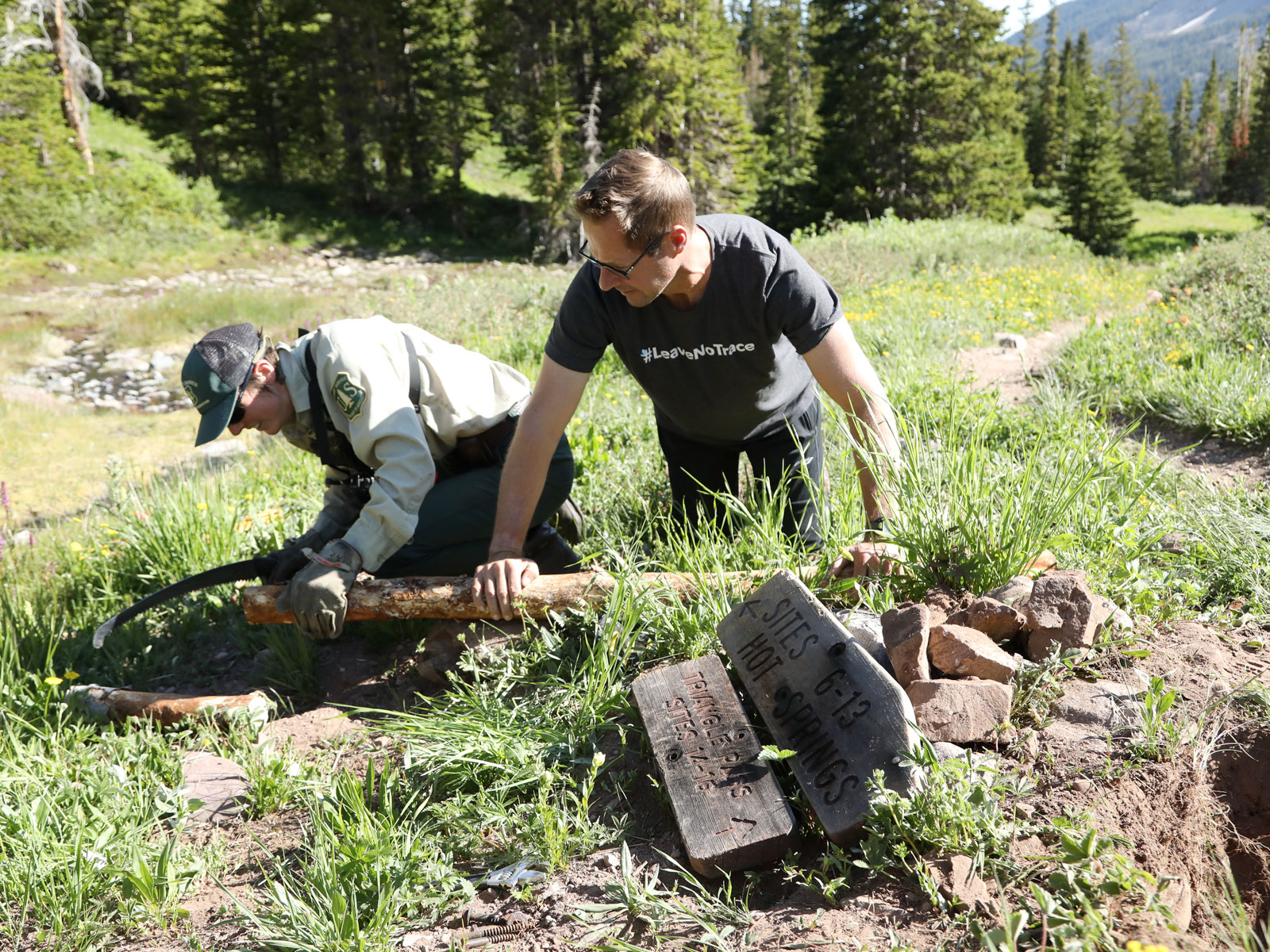The Local newsletter is your free, daily guide to life in Colorado. For locals, by locals.
Nothing ruins a good hike like stumbling upon an abandoned campsite full of trash and empty beer cans (or worse yet, a still-smoldering fire). Yet, as Colorado’s population grows, it’s not uncommon to find these scenes, as well as dog poop bags, graffiti, and other outdoorsy blunders across the state. Heck, an anonymous individual even created an Instagram account called Trail Trash of Colorado just to call out perpetrators (to a mixed degree of success).
Clearly, it’s time for a refresher on Leave No Trace ethics. According to Dana Watts, executive director of the Boulder-based Center for Outdoor Ethics, the intent of the philosophy is “to provide a framework for people to care for the outdoors.” Built around seven core principles, Leave No Trace is especially important here in Colorado, where access to outdoors recreation is part of the draw of living and visiting here. Watts says it’s crucial to do what we can to maintain the integrity and the health of our natural areas before they’re “loved to death.”

One example is Conundrum Hot Springs near Aspen. “It’s a very unique and sensitive area that it is highly desirable,” says Watts. “People stay there overnight without necessarily knowing how to care for the place, so there are lots of waste issues—human waste, dog waste, and trash in general, both at the trailhead and at the springs.” The situation has gotten so bad that the U.S. Forest Service is currently developing a camping permit system for the area. The goal of Leave No Trace, says Watts, is to avoid new regulations and closures, and instead serve as a resource to help manage the land. The Center for Outdoor Ethics does this by working with a network of more than 600 partners, including the Colorado Fourteeners Initiative, a partnership of nonprofits that was created to preserve and protect the integrity of Colorado’s highest peaks.

The concept of Leave No Trace was started in the 1960s to educate the growing number of visitors to America’s public lands. As the impact of increased recreation became increasingly apparent, members of the outdoor industry banded together in 1994 to create the nonprofit Center for Outdoor Ethics with the express purpose of developing and funding Leave No Trace programs. What started as a backcountry wilderness movement has since developed into what Watts calls a “front-country philosophy” that emphasizes day use and locations close to home, including people’s own backyards.
The most important of the seven Leave No Trace principles, says Watts, is the first one: plan ahead. This sounds easy, but people often fail to figure out where they’re going, understand the weather conditions, determine if they need permits, and pack the basics, like sunscreen, food, water, maps, and a jacket. “We find that you can avoid a lot of impacts if you are prepared,” she says.
Fires are another major concern. “We’ve had major wildfire problems in the last few years,” Watts says. When people are more aware of the dangers and understand whether they are allowed to have a fire and how to extinguish it, they’re less likely to accidentally spark a wildfire.
It’s also crucial to avoid disturbing wildlife. “It’s a treat to see and experience wildlife in any outdoor venue,” says Watts, “but people don’t understand how what we do can really impact wildlife.” Feeding wild animals is never appropriate, she says, and it’s crucial to remain at a safe distance from them. “I’ve seen pictures of tourists going right up to bison. They’re still wild animals,” says Watts. She suggests using the rule of thumb: If you extend your arm in front of you and hold up your thumb, it should completely cover the animal; if it doesn’t, you’re too close.
Ultimately, says Watts, Leave No Trace comes down to your own personal ethics. “It’s really what you do when no one is looking that’s most important,” she says, “and what that means to you in caring for these places. That’s why Leave No Trace education is so important.”








